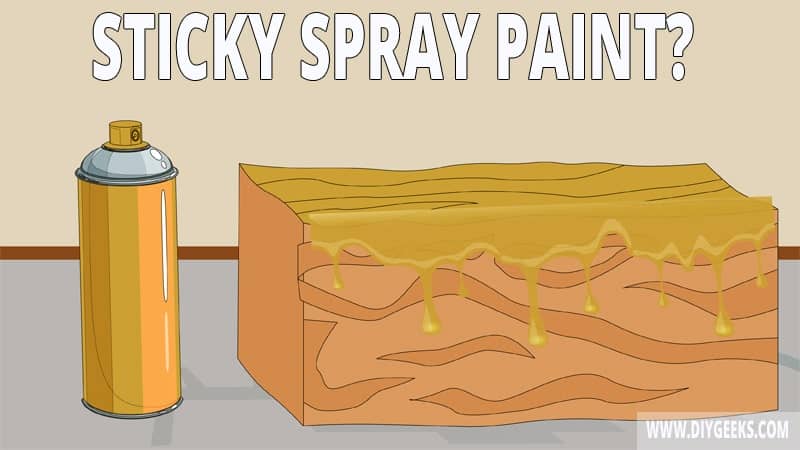Spray paint is applied at a high speed (or pressure) and is known to dry fast. So, when it doesn’t dry or if it turns sticky, you know there is a problem.
To fix sticky spray paint, use a hairdryer to accelerate the evaporation rate, use talcum powder, or remove the finish and re-apply it.
If the coating has been sticky (or tacky) for more than 24 hours, chances of it drying itself are low as it has been contaminated.
Why Does Spray Paint Turn Sticky?
Spray paint turns sticky for the following reasons.
- You applied too many coats.
- You re-recoated too soon.
- You applied the wrong type of spray paint.
- Bad weather.
- The surface was sealed.
- You didn’t prep the surface properly.
- High moisture levels.
1. You Applied Too Many Coats
There will be more spray paint on the surface than it can absorb if you apply more than the required number of coats. The excess coats that aren’t absorbed won’t dry and will turn gooey or sticky after a few hours.
You can also over-apply spray paint by keeping the can spraying on one spot for too much time.
2. You Recoated Too Soon
You must leave enough dry time between each coat before applying the next one. If you don’t, the solvent of the existing coat will prevent a new coat from sticking or sticky, and the whole finish turns sticky.
Spray paints are thin and need multiple coats for proper coverage on a surface. They take an hour to dry enough for a recoat. If you recoat it before the existing coat is dry enough for a recoat, the whole finish will not dry and will turn sticky.
The stickiness is caused by the wet undercoat that wasn’t allowed to dry enough. Since the first coat wasn’t dry enough before the recoat, there will be moisture trapped between each coat causing the whole finish to remain damp and sticky for several hours.
3. Wrong Type of Spray Paint
There are so many types of spray paints and each type is specific to a material or surface. For instance, Rust-Oleum spray paint is specific to metal surfaces. So if you use it on wood, the paint will not dry and will turn sticky because you used it on the wrong surface.
4. Bad Weather
Spray paints need to be applied in optimal drying conditions. Before applying it, the room temperature has to be within 50-90 degrees Fahrenheit. The level of humidity must also be lower than 50%.
If any of these drying conditions aren’t met, the coating will turn sticky. For instance, spraying paint when the room temperature falls below 50 degrees F means the paint will take longer to dry, and if the room temperature is cool enough the coating will turn sticky.
5. The Surface was Sealed
Spray paints when applied penetrate the surface rapidly to stick. If an existing sealer, such as varnish, polyurethane, or lacquer, is on the surface the paint won’t penetrate the surface properly and can turn sticky.
The reason for this is that the sealer on the surface would repel it, making it impossible for the paint to stick. Since the spray paint doesn’t stick, there is no way it will dry properly.
6. You Didn’t Prep the Surface Properly
Before applying spray paint, the surface needs to be wiped, cleaned, sanded, and primed. If you skip any of these steps, the coating will not stay on the surface and will eventually get contaminated and turn sticky.
This is very common for dusty or filthy surfaces.
7. High Moisture Levels
Spray paints dry when used in high-moisture areas. If the surface is damp, the coating won’t dry. If the coating is exposed to moisture leaks or rainfall, it will also not dry. Any sort of exposure to moisture will cause it to turn sticky.
Does Tacky Spray Paint Eventually Dry?
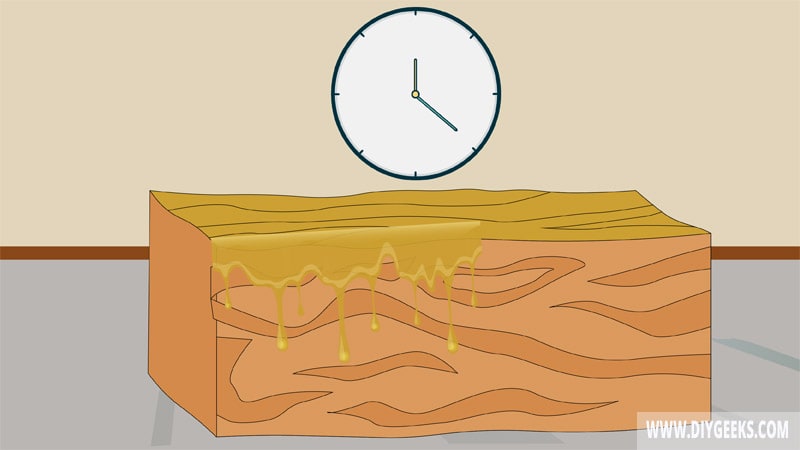
Tacky spray paint does eventually dry only if you fix the cause of the tackiness in time. If you don’t fix it in time, and the coating remains tacky for over 24 hours, the chances of it drying later are reduced as the coating will be contaminated.
The tacky finish will dry itself if it’s caused by a bad weather (or low temperature). You must expose the finish to increased air circulation (by opening all windows) and increase the heat around it to accelerate the evaporation rate.
You don’t have to wipe off excess spray paint from a surface after application because it is designed to stick and stay on the surface as a top coat. If you wipe it after application, you’ll smear the finish.
Related Read: Spray Paint Dry Time?
How To Fix Sticky Spray Paint?
To fix sticky spray paint do the following.
- Use a Hairdryer.
- Use Talcum Powder.
- Strip the Finish and Re-apply it.
1. Use a Hairdryer
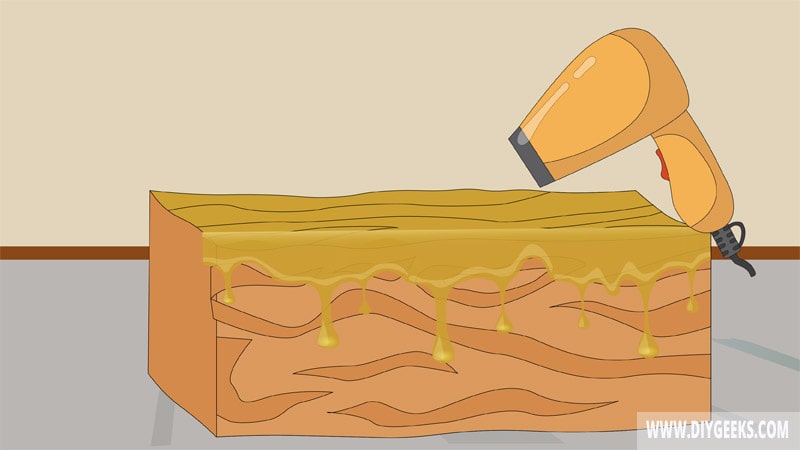
Since the coating is sticky because it isn’t drying, exposing it t to heat from a hairdryer will increase the rate of evaporation so it can dry faster.
If you don’t have a hairdryer, you can use a heater, or a radiator, or increase the room temperature using the thermostat.
The tools you need for this project are listed below.
- A clean rag
- A hairdryer
- A pair of gloves
Here is a guide to this drying method:
- Use a clean rag to dab the coating – the rag will soak moisture on the surface.
- Plug in and turn on the hairdryer.
- Set the hairdryer to medium heat (around 100 degrees F).
- Move the hairdryer around the coating for a few minutes.
- Turn off the hairdryer and leave the paint to dry.
2. Use Talcum Powder
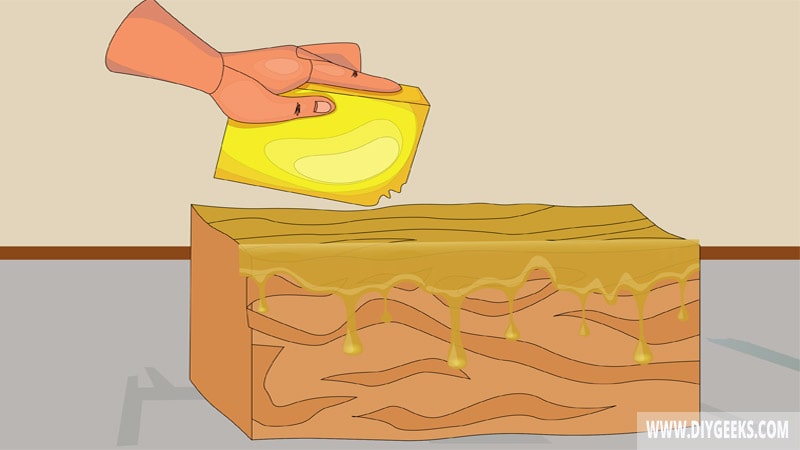
Talcum powder is an absorbent that soaks up moisture. Sprinkle talcum powder directly over the coating and leave it to soak up the moisture in the paint. You can also use baking soda powder instead of talcum powder.
This method is ideal for areas that will be covered with furniture or items because the drying powder will cause the coating to appear different so only use this method if you’ll put decorative items or furniture over the finish.
If the finish will be exposed, use another drying method on this list.
The tools you need for this project are listed below.
- Talcum powder or baking soda powder
- A bristled paintbrush or chip brush
Here is a guide for this method:
- Sprinkle talcum powder over the tacky coating.
- You can use a paintbrush to gently touch up the coating so the talcum powder works well (optional).
- When the spray paint is dry, you can apply an extra coat of paint to cover the spot.
- Leave the paint to dry.
Tip: After using the talcum powder, you can make the spot look better by scuffing the finish or sealing it with varnish or oil-based polyurethane.
3. Strip the Finish and Re-apply it
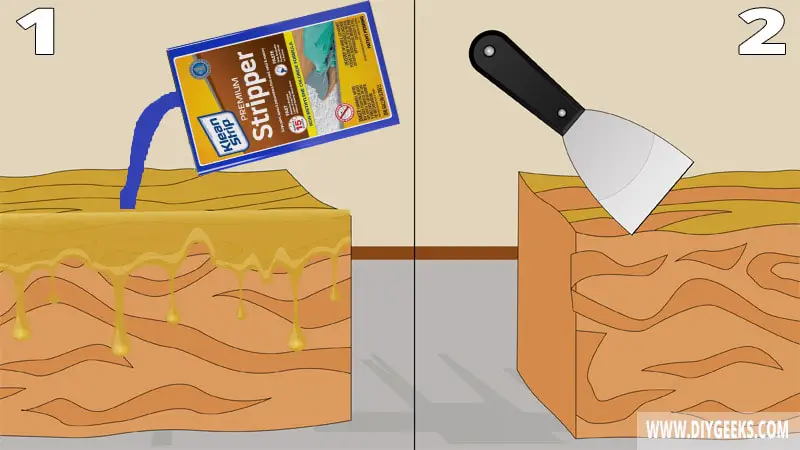
If nothing works, strip the finish off the surface. Only do this if the finish remains tacky 24 hours after applying it.
The tools you need for this project are listed below.
- A paintbrush
- Chemical-based paint stripper
- A paint scraper
- A pair of gloves
- Sandpaper
Here is a guide for this method:
- Apply a generous amount of paint stripper directly to the finish.
- Wait 30 minutes.
- Use a plastic putty knife or a scraper to scrape off the paint stripper (the spray paint will come off too).
- Repeat the steps above for leftovers
- Clean the surface with mineral spirits and then with clean water.
- Leave the surface to dry for 24-48 hours.
- Sand and prime the surface.
- Re-apply the spray paint.
Tip: If you don’t have a paint stripper, you can also use acetone or paint thinner to remove the spray paint. But, be gentle with these solvents as they can also damage the surface if used carelessly.
How To Know if Spray Paint Has Dried?
The spray paint coating has dried, if the following things happen.
- If the color of the paint is fully set on the surface. If the finish hasn’t dried, the color will appear lighter or deeper than it is.
- If the coating becomes hard and strong.
- When you can sand the coating, it has dried. If the finish is still wet, you can’t sand it as it will clog the sandpaper.
Related Read: Fixes For Other Spray Paint Problems
How To Prevent Spray Paint From Turning Sticky?
To prevent spray paint from turning sticky, do the following.
- Always follow the manufacturer’s instructions when applying the paint.
- Only spray paint in ideal drying conditions (above 50 degrees Fahrenheit and below 50% humidity level).
- Leave enough dry time between coats.
- Ensure the surface is clean and dry before applying it.
